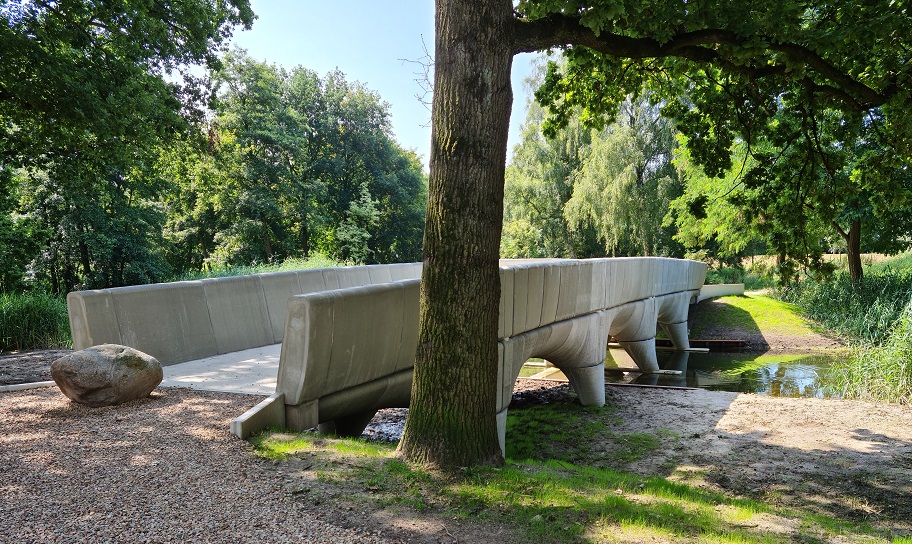I’m rather unsure about the potential of 3D printing houses. I know that it is the right thing for the press: additively manufacturing (AM) homes and solving the housing crisis make for a perfect story that is sure to resonate with many people. A PR strategy may build a business, without it being the best business. In the long run, it may make sense to 3D print houses, but I think that there is significantly more money to be made in other applications first.
With houses, there are a number of costs related to exterior and interior finishing, land, and labor and that make up the total expense of construction. 3D printing can help to offset these by reducing labor and formwork costs. However, this will only make significant impacts once architects start designing for 3D printed buildings. Building regulations and construction firms are also often very local. So, conquering the market will be a piecemeal affair. Every design or project will have to undergo a lot of regulatory hoopla, as will meeting with developers and clients. It may be worthwhile in the end, but slow going. There are other additive construction (AC) applications out there that do not suffer from these problems.
Concrete Doohickeys
There is a whole class of cement-based objects that doesn’t really have a name yet. Let’s call them concrete doohickeys. And they could potentially be lucrative to 3D print. Below is a list of concrete doohickeys to consider:
- Barriers, blocks, ornaments, and sound insulation walls for traffic
- Anti-terrorism shields, tank traps, temporary walls and security blocks, bunkers, shelters, security huts, and other safety/defense structures
- Bollards
- Poles for supporting walls and fences
- Room dividers
- Small pedestrian bridges, car bridges, and overpasses
- Complex formwork for tunnels
- Stables, silos, cattle/livestock/wild animal grates, and other small structures for agriculture
- Restroom structures, including those featuring toilets
- Small government buildings
- Garden houses, garden and restaurant statues, fountains, planters, ornamental fake rocks, benches, and playground elements
- Stairs and floors
- Septic tanks, pipes, drains, sumps, and other waste management elements
- Culverts, pipelines, and pipeline supporting components
- Warehouses, garages
- Pylons, footings, columns, facades, joists and other building elements
- Railroad ties
- Pump tracks and other track-like elements
- Sea walls
All of these examples, and this list is far from exhaustive, could be good candidates for AC. What’s more these objects represent a lot of value per liter or cubic centimeter. Per minute of 3D print time, you can create a lot of value with these parts. They can all also be printed indoors, in a protected and controlled environment. That way you can manage variables, such as temperature and humidity, to achieve better results.
Though they are labor-intensive if made traditionally, these elements can all be made near-automatically with 3D printing. Normally, these products take several weeks to make, but, with 3D printing, they can be made faster. This means we don’t have to tie up capital in maintaining extensive stock. AC can also deliver faster according to market demand. Designs can be updated more quickly according to trends. A lot of these things would also benefit from customization. We could make concrete doohickeys with less material and less waste, more sustainably and faster than with traditional means.
Whereas most of the concrete doohickeys are made with traditional precast concrete, some are made through other means. However, the key here is that there are millions upon millions of traffic barriers, silos, planters, drainage ditches, sea walls, and the like. The potential here is many billions in revenue.
As far as I know, only a handful of firms, including Australia’s BOSS Products and the Dutch 3D printing arm of St. Gobain, Weber Beamix, are looking into this extensive opportunity in any meaningful way. Indeed, St. Gobain has a customization tool that allows customers to quickly price down-sloping stairs. The custom design uses less material and is lighter than a steel or concrete staircase made in place, or even a precast stairs. It is less expensive, as well.
Taken together, the fact that we can make these elements without stock, faster, less expensively, and with less material is a significant competitive advantage. Houses may very well be an exciting future area for 3D printing. However, away from the hype, if you’d wish to generate billions in revenue with AC, then a focus on the above items would, in my mind, be a much more immediately successful one.
Subscribe to Our Email Newsletter
Stay up-to-date on all the latest news from the 3D printing industry and receive information and offers from third party vendors.
You May Also Like
Profiling a Construction 3D Printing Pioneer: US Army Corps of Engineers’ Megan Kreiger
The world of construction 3D printing is still so new that the true experts can probably be counted on two hands. Among them is Megan Kreiger, Portfolio Manager of Additive...
US Army Corps of Engineers Taps Lincoln Electric & Eaton for Largest 3D Printed US Civil Works Part
The Soo Locks sit on the US-Canadian border, enabling maritime travel between Lake Superior and Lake Huron, from which ships can reach the rest of the Great Lakes. Crafts carrying...
Construction 3D Printing CEO Reflects on Being Female in Construction
Natalie Wadley, CEO of ChangeMaker3D, could hear the words of her daughter sitting next to her resounding in her head. “Mum, MUM, you’ve won!” Wadley had just won the prestigious...
1Print to Commercialize 3D Printed Coastal Resilience Solutions
1Print, a company that specializes in deploying additive construction (AC) for infrastructure projects, has entered an agreement with the University of Miami (UM) to accelerate commercialization of the SEAHIVE shoreline...
































